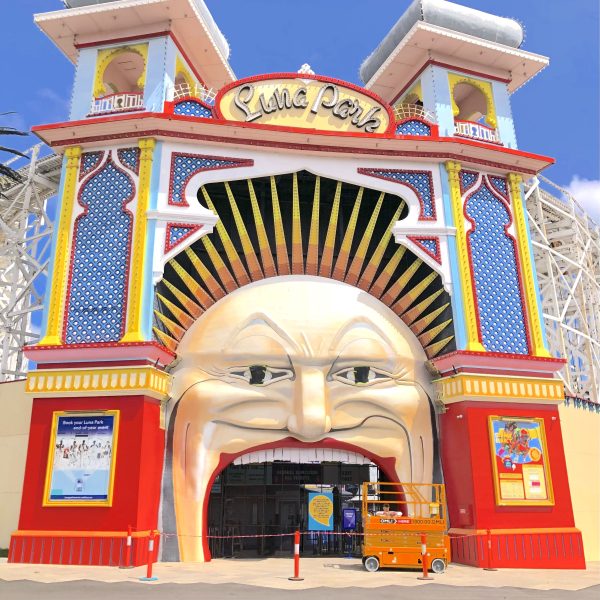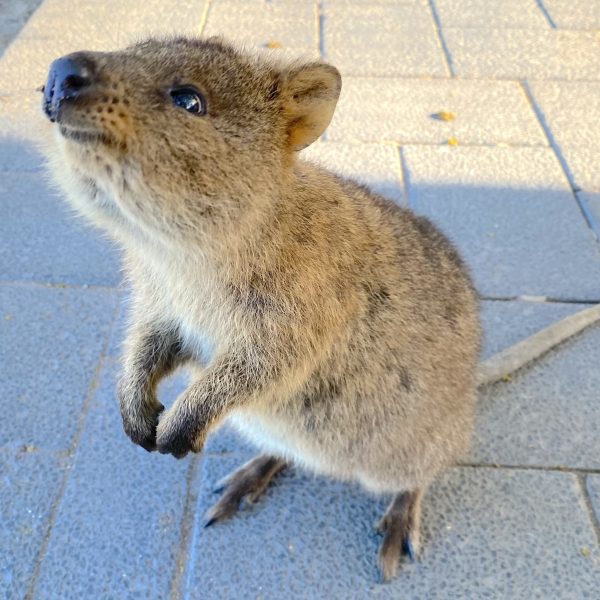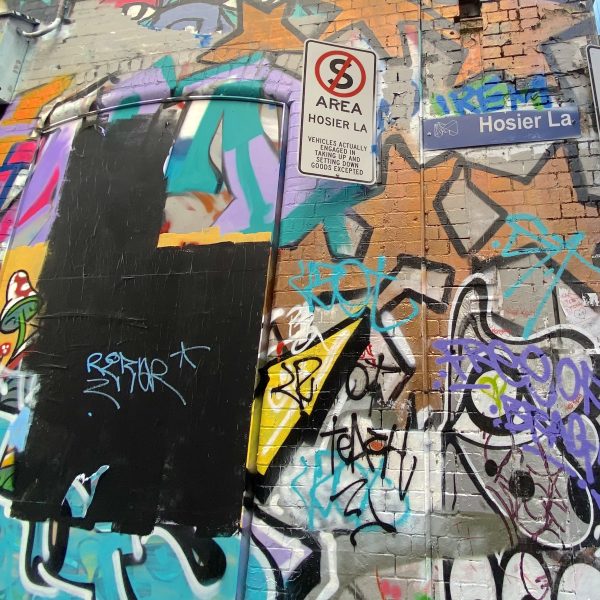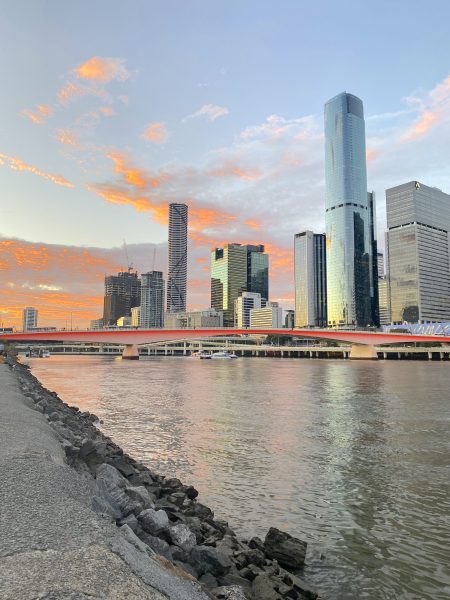
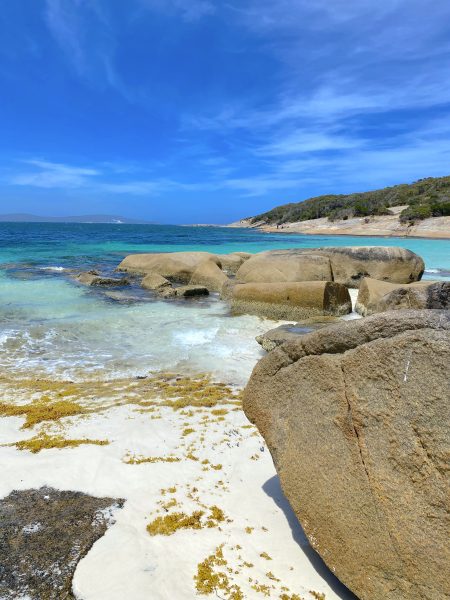
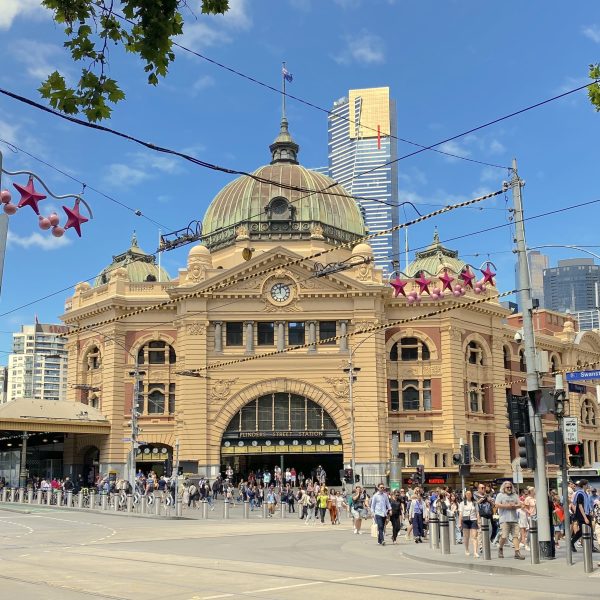
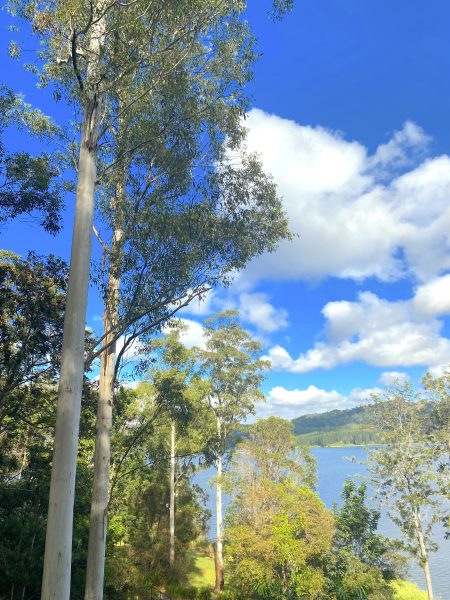
What to Expect in Australia
So, you’re heading to the land Down Under—get ready for sunshine, kangaroos, and maybe an unhealthy addiction to Tim Tams. Here’s the lowdown on what you need to know before you arrive:
- Money: Australia runs on the Australian Dollar (AUD), but good news—you can probably leave your cash stash at home. This place is like the world capital of tap-and-go payments. Credit cards, PayPass, Apple Pay—you name it, they accept it. Unless you’re trying to buy something from a roadside honesty box in the middle of nowhere, you’re good to go card-only.
- Plugs: Plug type? Type I. Yes, the plug type has a name, and no, it’s not the same as Europe or the US. So, pack an adaptor unless you’re keen on a dead phone.
- Capital: It’s Canberra! Not Sydney or Melbourne, like you were probably thinking. Canberra sits in the ACT (Australian Capital Territory) and was basically created as a compromise because Sydney and Melbourne couldn’t stop bickering over who should be the capital. It’s like the middle child of Australian cities—overlooked but kind of cool once you give it a chance.
- Time Zones: Australia is huge. Like, six-time-zones-huge. The main ones you’ll care about:
- Perth is on UTC+8.
- Northern Territory and Adelaide are UTC+9.30.
- East coast cities (Brisbane, Sydney, Melbourne) are UTC+10.
- Climate: The weather? Let’s just say Australia likes to keep you guessing:
- Inland: Dry as a bone and hot enough to fry an egg on the pavement.
- North (Queensland): Think tropical and humid—like stepping into a sauna. Temps hover around 30°C in summer and 20°C in winter.
- East Coast (Sydney, Melbourne, Adelaide): Summers hit a comfy 29–30°C, but winters can get chilly—around 13°C and usually a bit rainy.
- West Coast (Perth): Hot, dry, and sunny. Summers average a toasty 35°C, and winters stay mild at about 18°C. Air-con is your best friend here.
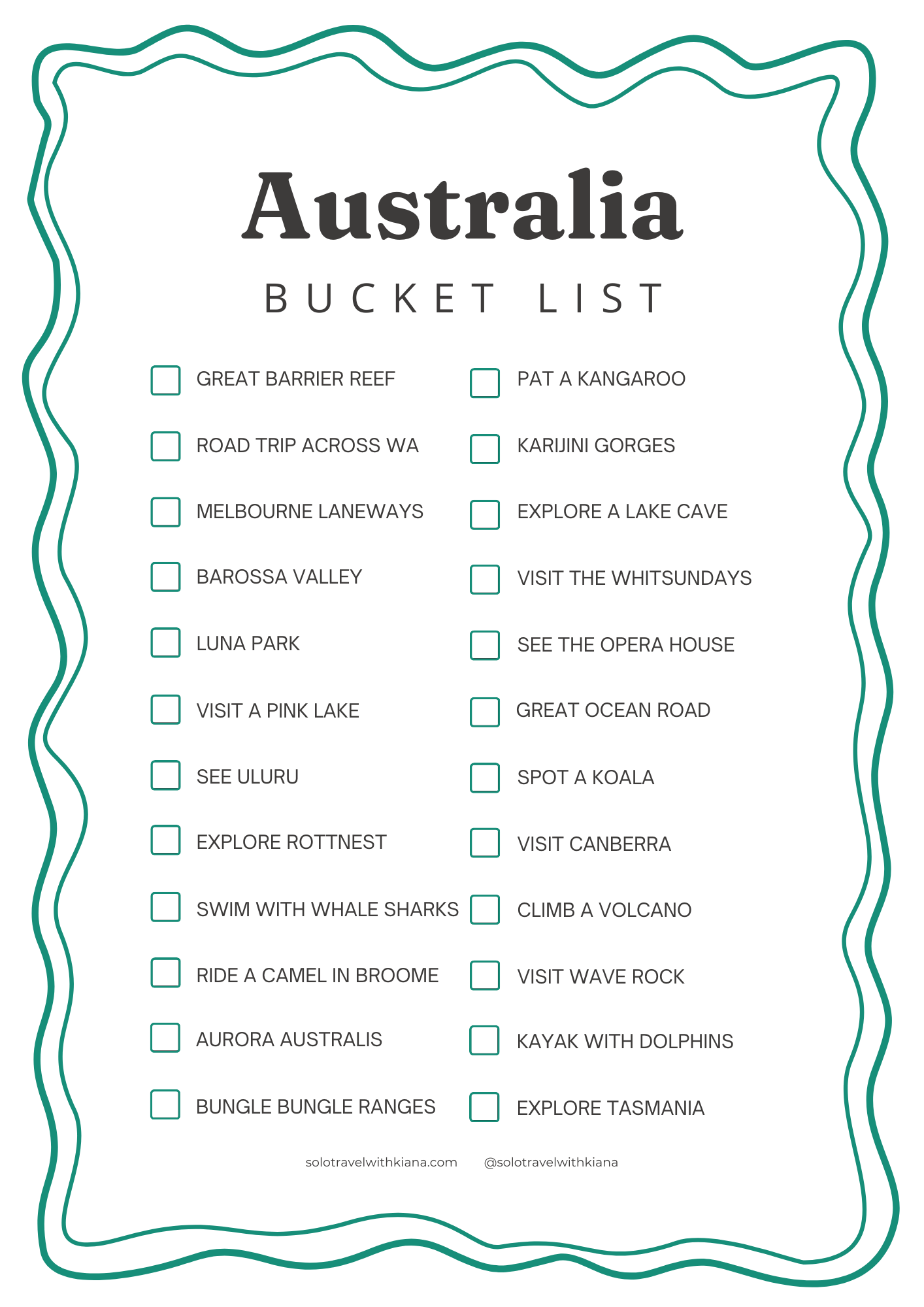
Bucket List Experiences
What It’ll Cost You
Travelling in Australia doesn’t have to break the bank, especially if you’re sticking to hostels, public transport, and affordable eats. To make budgeting easier, here’s a quick guide to the typical costs you’ll encounter while exploring this sun-soaked country:
| Expense | Cost Range (AUD) | Notes |
| Hostel Dorm Bed | $25–$40 per night | Prices vary depending on the city, with Sydney and Melbourne on the higher end. |
| Budget Hotel | $80–$150 per night | Great for solo travellers wanting a private room; options are limited in smaller towns. |
| Groceries | $50–$70 per week | Stock up at major supermarkets like Coles, Woolies, or Aldi for the best value. |
| Eating Out | $10–$20 per meal | Cheap eats include food courts, takeaway, or casual cafes. |
| Public Transport | $2–$5 per ride | Most cities have daily caps; get a travel card (like an Opal in Sydney) to save money. |
| Car Rental | $30–$70 per day | Prices depend on the season and location—road-tripping in WA might be pricier. |
| Activities | $20–$50 | Think day hikes, museum entries, or local tours. Bigger activities (like diving) cost more. |
| Sim Card/Data | $10–$30 | Opt for prepaid SIMs with data from Telstra or Optus—coverage varies in rural areas. |
| Coffee | $5–$8 | Australia takes its coffee seriously, so even cheap cups taste amazing. |
| Beer or Wine | $6–$12 per drink | A pint or a glass of wine at a casual bar; craft beers and cocktails will cost more. |
Pro Tip: If you’re doing a lot of activities, look into combo deals or discount passes. Every little bit helps!
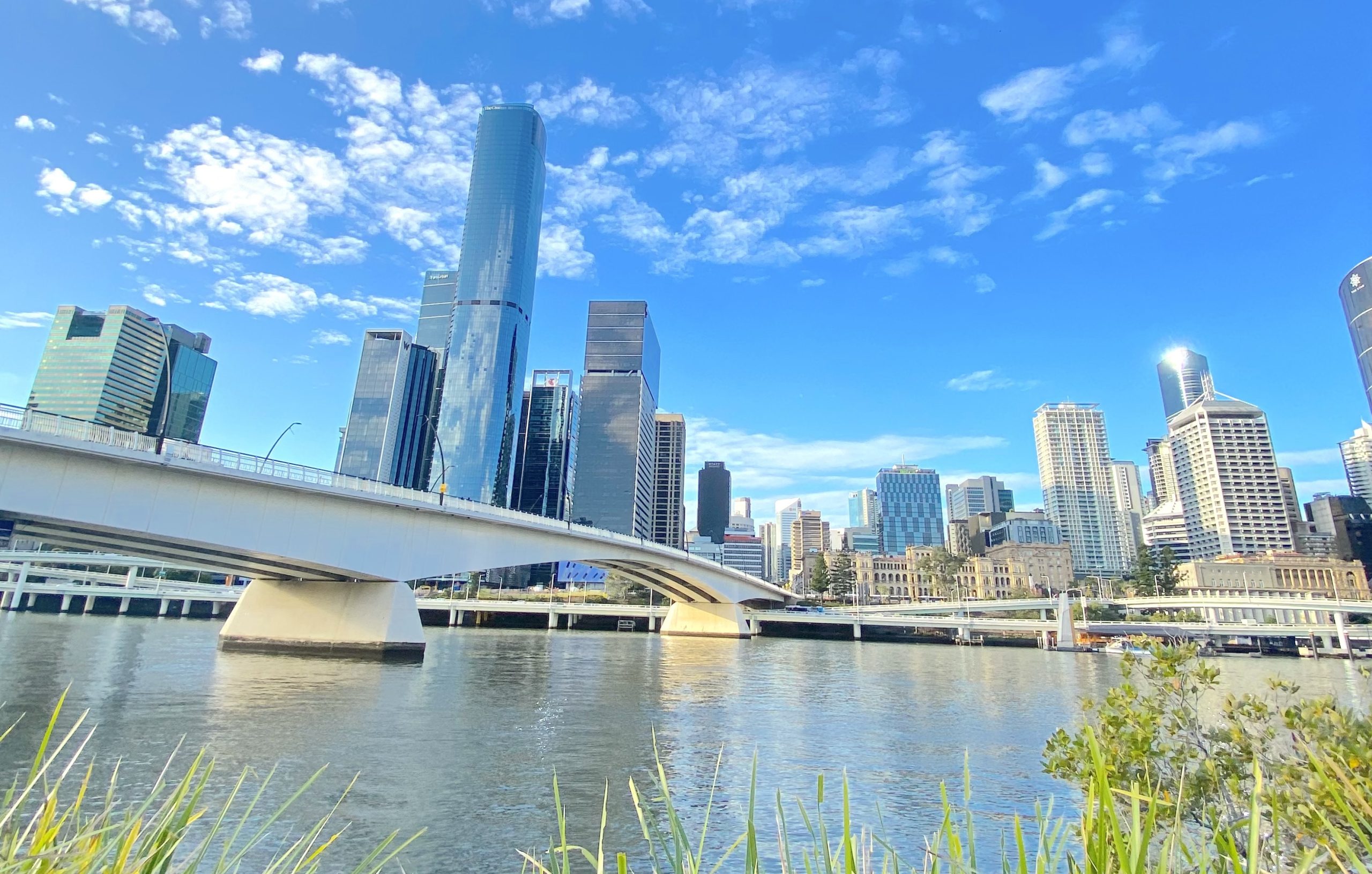
Transport: How to Get Around Australia Without Losing Your Mind
Getting between Australia’s major cities can be a bit of a mission thanks to the sheer size of the place, so flying is usually your best bet. Flights along the east coast are pretty cheap—usually under $100 if you snag a deal. Heading over to the west coast? Expect to fork out a bit more cash (worth it for those beaches, though).
Here’s the lowdown on airlines:
- Jetstar: Your go-to for budget flights and awesome sales. If you’re lucky, you’ll score a bargain.
- Virgin Australia: Decent prices, mid-range service. Sometimes you’ll find good deals here too.
- Qantas: Used to be Australia’s “fancy” airline but is now just an overpriced Jetstar. Skip it unless the price is shockingly good.
Pro tip: Keep an eye out for flight sales—being quick can save you some serious dollars.
If you’ve got more time and want to save cash, Greyhound buses are another solid option. They’re slower than flying, but with their passes, you can customise your trip:
- East Coast Whimit Pass: Covers the east coast’s hot spots.
- National Whimit Pass: Takes you inland to places like the Northern Territory, South Australia, and even Broome in WA.
These buses are surprisingly comfy with WiFi, USB chargers, air-con, leather seats, and even a bathroom. Perfect for budget travellers wanting to see more than just the big cities.
Once you’re in a city, public transport is super easy to use. Most cities have their own travel cards (think Opal in Sydney or Myki in Melbourne) that give you cheap unlimited travel for a set period. Tickets usually cost $2–5 per ride, but beware—Melbourne can be pricier!
For rural or regional towns, public transport might be sparse or non-existent. Do your homework before you go to see if you’ll need a hire car, or if walking is an option. Some towns might surprise you with their own quirky local transport systems!
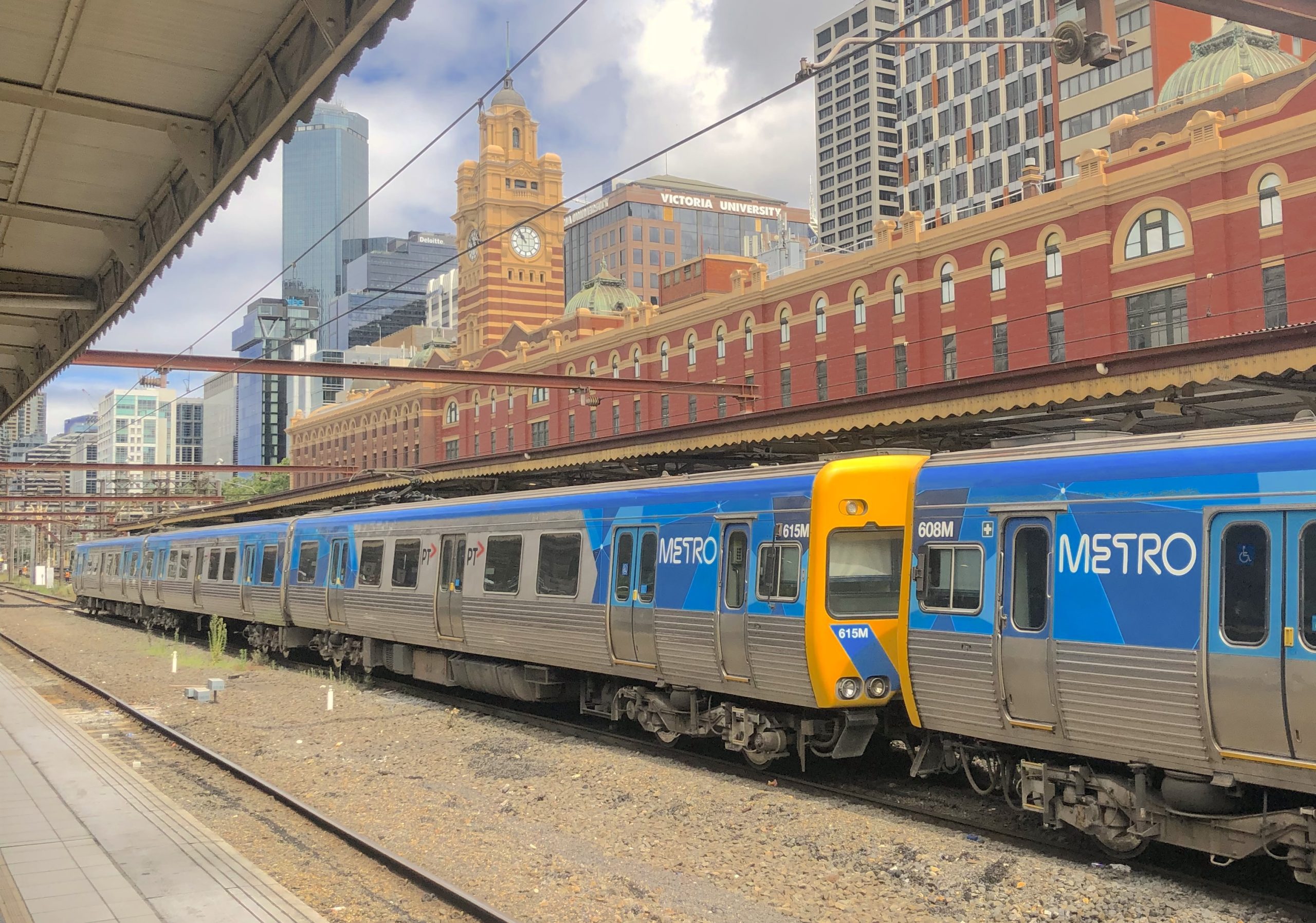
Stay Safe in Australia: What You Need to Know
Emergency Numbers
Dial 000 for police, fire, or ambulance emergencies. For non-urgent police matters, call 131 444.
General Safety
Australia is one of the safest countries to visit, thanks to its stable political system and low crime rates. That said, it’s always smart to keep an eye on your belongings and stay aware, just as you would anywhere else in the world.
Sun Safety
Australia takes sun protection seriously—it’s the land of “Slip, Slop, Slap, Seek, and Slide”! Translation:
- Slip on a shirt.
- Slop on lots of sunscreen (and reapply every 2–3 hours).
- Slap on a hat.
- Seek out shade.
- Slide on some sunnies.
The UV index here is no joke, especially in summer. Australia holds the unfortunate title of skin cancer capital of the world, so protect your skin and don’t skimp on sunscreen.
Beach Safety
Australia’s beaches are stunning, but the water can be wild if you’re not prepared. Here’s how to stay safe:
- Swim between the flags: These mark the safest swimming areas, monitored by lifeguards. Outside the flags, you’re on your own with risks like rips and sharks.
- Know how to spot a rip: Look for darker water, fewer waves, or anything that looks like water flowing out to sea. If locals are steering clear of an area, take the hint—they know what’s up.
- Respect your limits: If the waves are massive or you’re not a confident swimmer, it’s okay to sit this one out. Better safe than sorry!
Sharks (Don’t Panic!)
Yes, sharks exist, but the chances of encountering one are slim. Just take these precautions:
- Swim with a buddy. Sharks are less likely to approach groups.
- Avoid swimming at dawn, dusk, or night.
- Stay clear of sandbars and steep drop-offs.
Many beaches have shark alarms or helicopter patrols. If a shark is spotted, calmly head to shore—no need to panic.
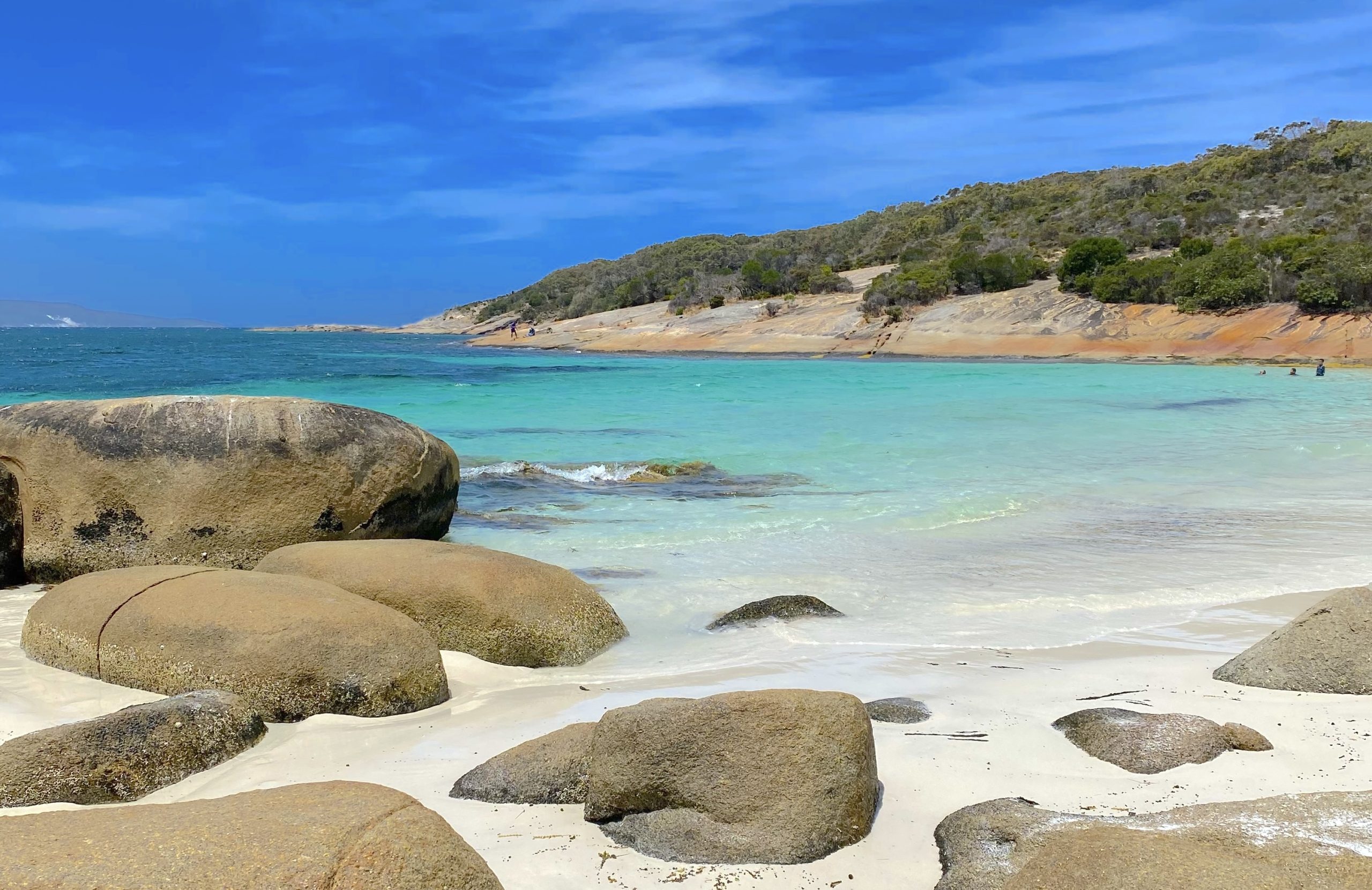
11 Ultimate Things to Do on Rottnest Island (Wadjemup) for an Unforgettable Adventure
11 Ultimate Things to Do on Rottnest Island (Wadjemup) for an Unforgettable Adventure What is…
Self-Guided Walking Tour of Melbourne’s Best Laneways
Self-Guided Walking Tour of Melbourne’s Best Laneways So… what’s the hype with Melbourne’s laneways? If…






